Milwaukee River Could Become A Salmon Spawning Hub
Sport fishing group will start releasing fish from pens near rowing club.
The athletes using the Milwaukee Rowing Club facility along N. Commerce St. could soon be racing more than just other boats.
The city’s redevelopment authority, which owns the rowing club facility, approved a lease Tuesday to allow a charitable sport fishing group to seasonally install pens alongside the docks in the spring so that salmon and trout could be released into the Milwaukee River.
“The fish are not natural to the [current] eco-system. They do not reproduce naturally in the Wisconsin tributary system,” said group vice president Brian Haydin to the board of the Redevelopment Authority of the City of Milwaukee.
For years, the fishing group has affixed its pens to the side of docks at the Milwaukee Community Sailing Center, 1450 N. Lincoln Memorial Dr. But the organization often doesn’t put the docks in until the start of May, which the DNR considers a late date to begin stocking the fish. That had the group looking for another location.
“The ideal site is located in the Milwaukee tributary system as far upstream as possible,” said Haydin. Not far upstream from the rowing club, 1990 N. Commerce St., the former North Avenue dam serves as a demarcation point between the dredged, wider river to the south and the more natural, faster-flowing to the north. The DNR recommends sites be easy to access and have a river width of at least 150 feet and a depth sufficient to handle a four-foot-tall pen. The water temperature must be below 60 degrees.
Haydin said the group would build all new net pens for the river location. In 2019, the DNR reports that 89,847 chinook salmon were released from the group’s pens. Last year the DNR reported stocking 1.2 million chinook salmon, 515,000 coho salmon, 430,000 steelhead trout 411,000 brown trout and 50,000 brook trout along the state’s Lake Michigan shoreline.
RACM is charging the organization $1 for the lease. The group must comply with all state and federal regulations and also avoid interfering with the rowing club. Both Haydin and RACM assistant executive director Dave Misky said the rowing club is okay with the plan given that the pens would be located between the two docks the club uses.
Those looking to learn more about the club, a 501(c)(3) organization, can visit its website or Facebook page.
The pens aren’t the only change coming to the rowing club property. The Common Council recently approved using excess revenue from a nearby tax incremental financing district to pay for repairing the sinking riverwalk stairs. A Department of City Development official said in February that the wrong fill was used, causing the pavement to settle unevenly.
Photos and Site Plan
If you think stories like this are important, become a member of Urban Milwaukee and help support real, independent journalism. Plus you get some cool added benefits.


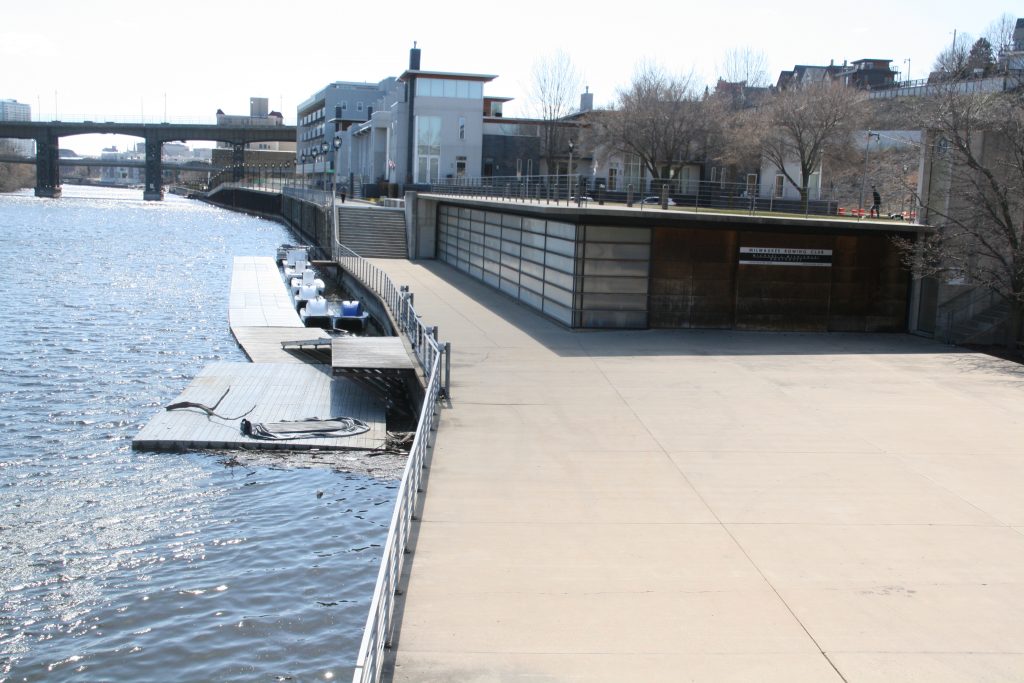
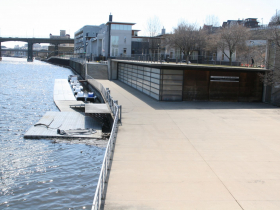
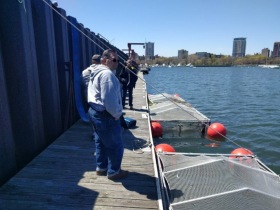
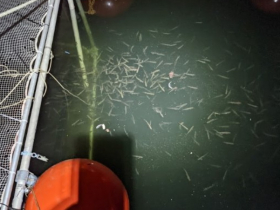
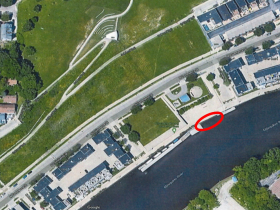


















Thank you for this interesting Lake Michigan fishing article. We have one of the greatest sport fisheries on the planet and only .01% of Milwaukee residents are aware of it. People come from all over the world to hunt Lake Michigan trout and salmon in Southeast Wisconsin. I once interviewed a Japanese sports magazine television crew while they were filming their fishing trip on the Root River in Racine.
Chinook salmon swim into McKinley Marina like stampeding cattle during their Fall spawning run. Let’s see if the percentage of spawning chinook increases in the Milwaukee River and decreases in McKinley Marina now that they’ll be imprinted with Milwaukee River water before they’re released.
The number of trout and salmon released into Lake Michigan by the Wisconsin DNR in a given year is determined by the amount of baitfish available in the lake. The DNR tries to maintain a ratio of one pound of predator fish to 10 pounds of bait fish. Chinook salmon are the biggest eaters.. and they’re the tastiest fish to eat.
This is a good initiative though I wish the sponsors had considered other salmonoids for stocking. Chinook are most often only available to persons with well equipped boats fishing miles out of Lake Michigan. There are other salmonoids that stay closer to the shore and can be caught by shore fisherman. Chinook salmon are the dominant species stocked because of political pressure from the charter boat captains which means fewer of the fish stocked the stay closer to shore.
Sad that we put so much focus and investment in boosting non-native fisheries, instead of depleted natives like Lake Trout, Walleye, Yellow Perch, Northern Pike, etc.
@David Coles – The DNR stocked walleye in the lower Milwaukee River for many years. 2-3 million walleye were planted in the river in 1986, 1988,1990, and 1992. The walleye ate most of the stocked chinook salmon in the river shortly after the salmon were released by the DNR. So the DNR moved the chinook salmon stocking location to the McKinley Marina.
When the DNR did the massive stocking in the 1980’s and 1990’s, they used a Lake Winnebago strain of walleye instead of a Lake Michigan strain. The Milwaukee River walleye didn’t reproduce as planned. But I did see people catch a few walleye under the North Avenue bridge and in Estabrook Park. You can catch them by casting small to medium size twister tails, beetle spins, and crank baits. The river is also loaded with smallmouth bass, thanks to DNR stocking.
Commercial fishing and sea lampreys nearly wiped out Lake Michigan’s lake trout population. Commercial fishing wiped out the yellow perch population. Commercial fishermen caught so many Lake Michigan perch in the 1950’s that farmers in the Milwaukee area loaded up their wagons with perch that couldn’t be sold and spread the fish on their fields as fertilizer. Now you have a hard time finding any perch in Lake Michigan. And when the Lake Michigan bait fish population is low, chinook salmon start to eat perch.
Wis DNR – An Evaluation of Walleye Population Restoration Efforts in the Lower Milwaukee River and Harbor. 1995-2003. https://citeseerx.ist.psu.edu/viewdoc/download?doi=10.1.1.466.4011&rep=rep1&type=pdf